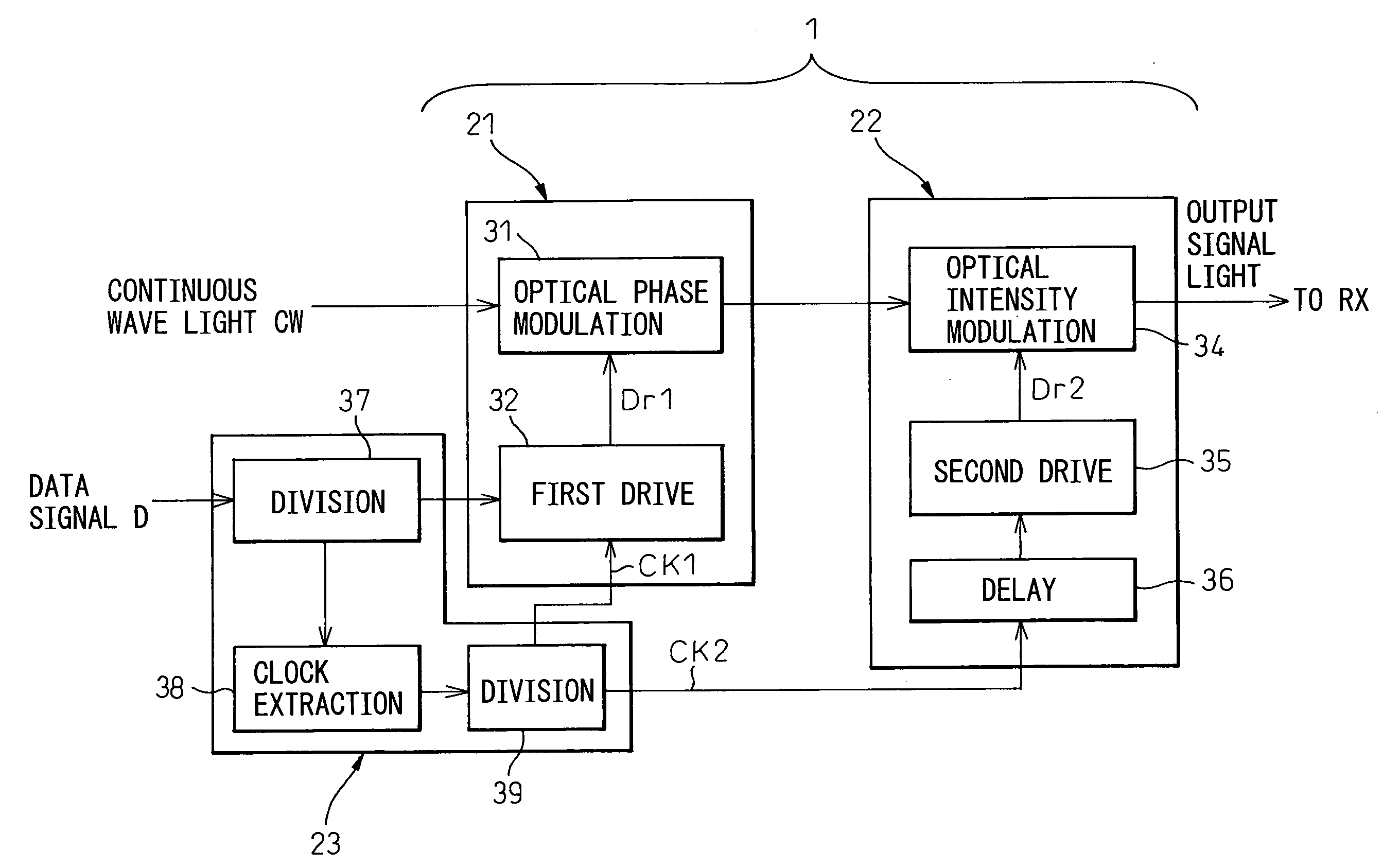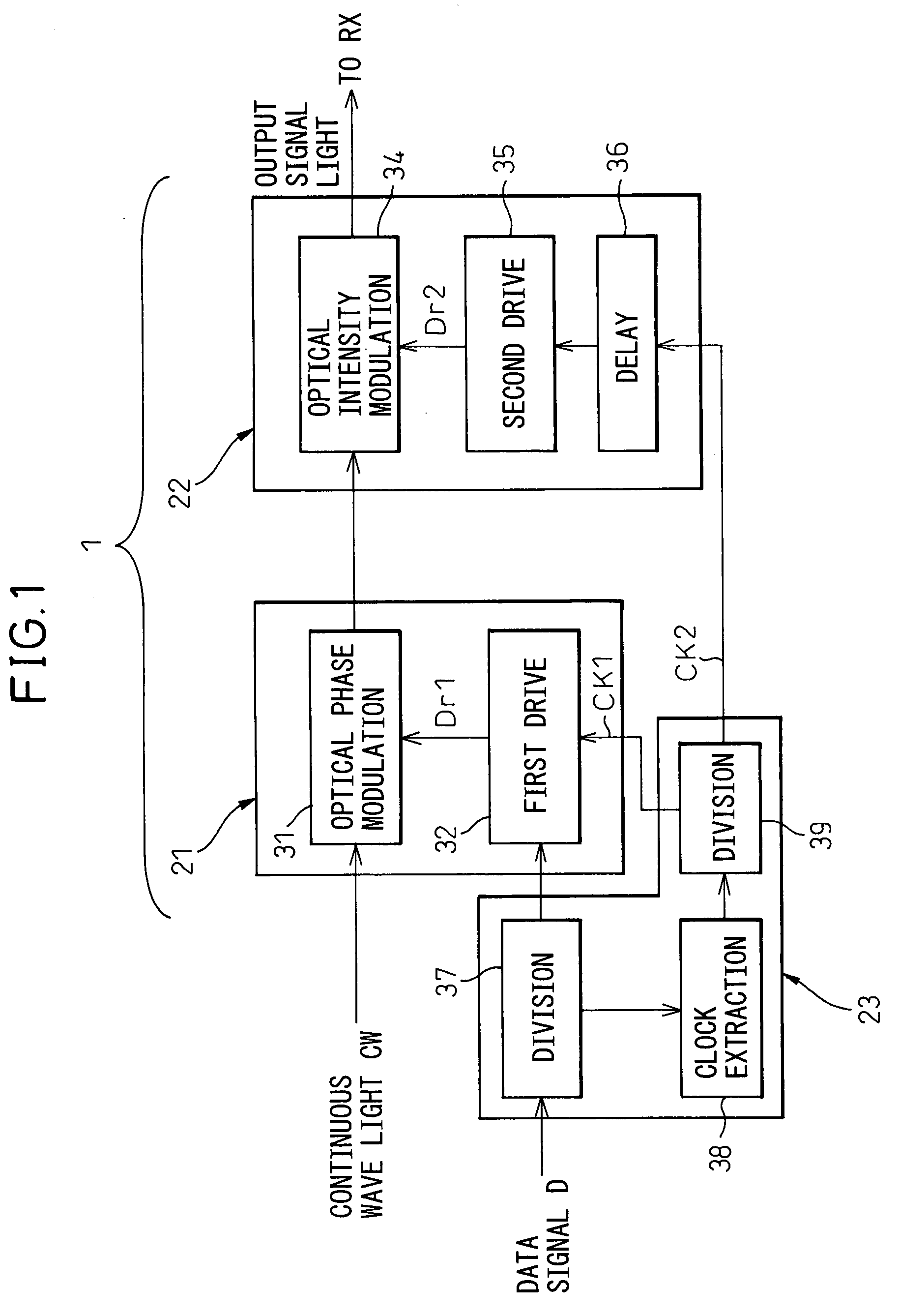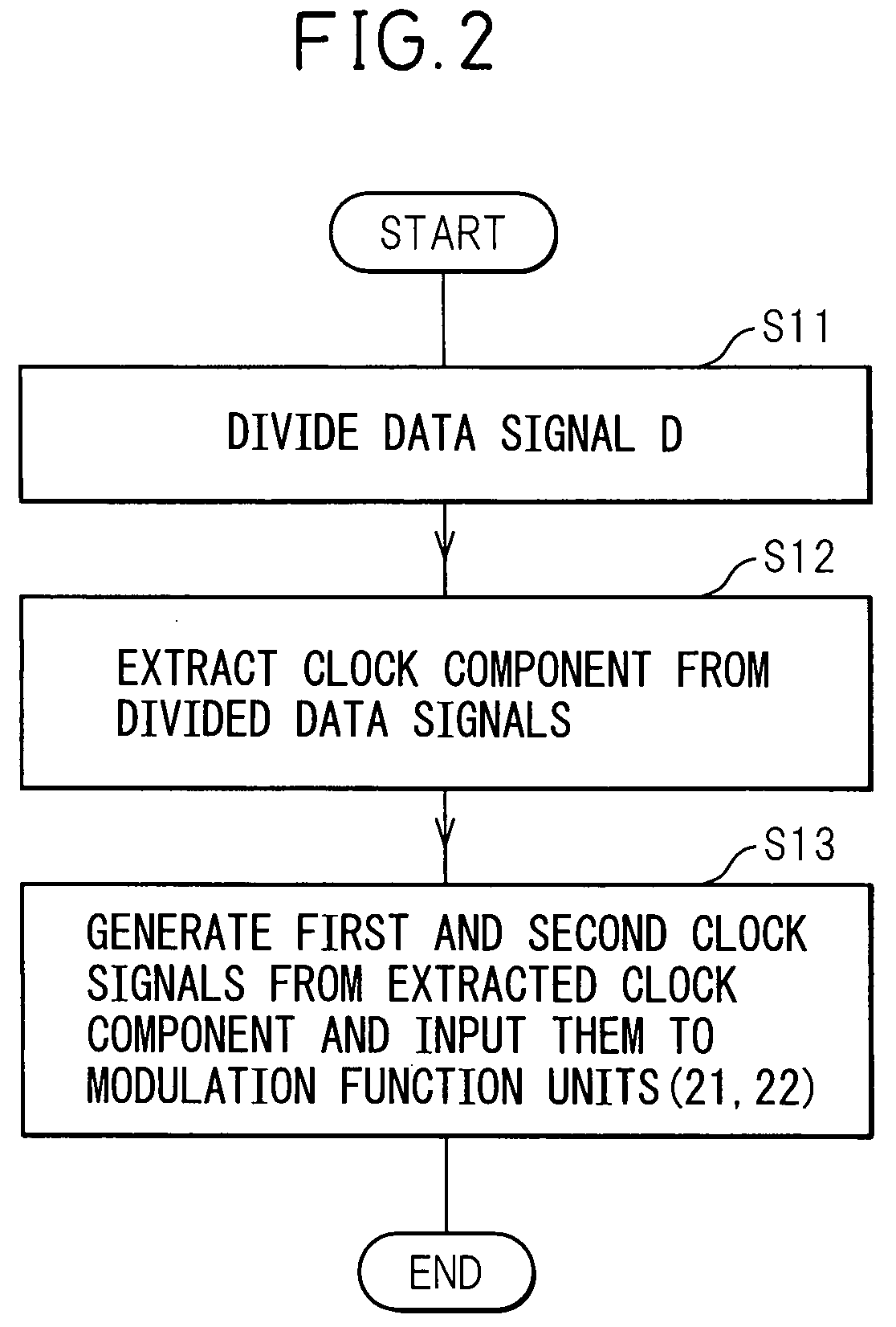Optical transmitter and drive method of same
- Summary
- Abstract
- Description
- Claims
- Application Information
AI Technical Summary
Benefits of technology
Problems solved by technology
Method used
Image
Examples
first embodiment
[0070]Next, several embodiments of the optical transmitter 1 driven according to the above-described drive method will be explained. FIG. 3 is a diagram showing an optical transmitter 1 according to the present invention. Note that the same reference numerals or symbols will be attached to the same components throughout all of the drawings.
[0071]Most of the configuration of FIG. 3 is the same as the conventional configuration shown in FIG. 15. The components newly introduced in the first embodiment are a first divider 41 (corresponding to 37 of FIG. 1), a PLL (phase locked loop) portion 42 (corresponding to 38 of FIG. 1), and a second divider 43 (corresponding to 39 of FIG. 1). This second divider 43 is equivalent to the divider 13 of FIG. 15. These components configure the clock recovery function unit 23 of FIG. 1. Further, on the optical intensity modulation function unit 22 side, a delay unit 45 (corresponding to 36 of FIG. 1) is introduced. Note that reference numeral 47 is a fi...
fourth embodiment
[0086]In short, in the fourth embodiment in which the intensity modulation is carried out by the CSRZ modulation scheme, the intensity modulation function unit 22 is configured by a frequency division unit 62 for performing ½ frequency division of the second clock signal CK2 comprised of the clock component having the same rate as that of the data signal D from the PLL portion 42′, a delay unit 45 for giving a constant delay to the ½ frequency divided signal thereof, and a second amplification unit 48 for amplifying the delay signal and outputting the second drive signal Dr2. That delay is set equal to the transmission delay when the data signal D passes through the FF portion 52 and the amplifier 14. Further, the second amplification unit 48 outputs a voltage two times the extinction voltage of the intensity modulation.
third embodiment
[0087]For this reason, in FIG. 6, in order to generate the above-described “½ frequency”, the aforesaid frequency division unit (½ frequency division) 62 is introduced, and the second clock signal CK2 of 20 GHz is ½ multiplied to 10 GHz. Note that, an explanation will be given of the extinction voltage with reference to FIG. 12.
[0088]In short, in the third embodiment in which the intensity modulation is carried out using the CSRZ modulation scheme, the intensity modulation function unit 22 is configured by a frequency division unit 62 for performing ½ frequency division of the second clock signal CK2 comprised of the clock component having a rate of ½ of that of the data signal D from the PLL portion 42, a delay unit 45 for giving a constant delay to the ½ frequency divided signal thereof, and a second amplification unit 48 for amplifying the delay signal and outputting the second drive signal Dr2. That delay is set equal to the transmission delay when the data signal D passes throu...
PUM
 Login to View More
Login to View More Abstract
Description
Claims
Application Information
 Login to View More
Login to View More - R&D
- Intellectual Property
- Life Sciences
- Materials
- Tech Scout
- Unparalleled Data Quality
- Higher Quality Content
- 60% Fewer Hallucinations
Browse by: Latest US Patents, China's latest patents, Technical Efficacy Thesaurus, Application Domain, Technology Topic, Popular Technical Reports.
© 2025 PatSnap. All rights reserved.Legal|Privacy policy|Modern Slavery Act Transparency Statement|Sitemap|About US| Contact US: help@patsnap.com



